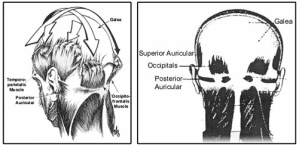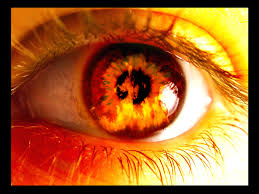
I love how some of the simplest yoga practices turn out to have the most profound effects upon me.
Most people think of yoga as sets of excruciatingly painful postures followed by hours of meditation and strange cleansing rituals. And while this is how some people like to practice “yoga,” there’s also an entirely different side to this fascinating way of life that most people never even realise exists. That way is simplicity itself. It’s such a deceptively simple path that when you’re on it you wake up one morning wondering how you’ve made so much progress with such little effort. It’s a way of practicing yoga that I like to call the path of the five kings.
The five kings are a set of simple practices. They’re what the ancient yogic texts describe as practices that can bring about liberation without the need to do anything else. Those practices are: Siddhasana (the perfect posture), Bramacharya (moderation), Ahimsa (nonviolence), Kevala (breath suspension), and Kechari (mudra of the void).
How do they work?
Siddhasana (perfect posture) is a basic sitting posture used by yogic adepts, when meditating, in which the heel of one foot is placed against the perineum (between the anus and genitals) with the second foot resting in front of the first (or, in an advanced posture, pressed against the pubic bone).
So what’s so special about siddhasana? Apart from providing a stable sitting position for meditation, the position the feet are placed in causes the mind to drift into a naturally meditative state. This happens for two reasons. Firstly, the blood flow to the legs is lessened which leaves more blood flowing in the upper body, keeping the mind alert and focused, and secondly the pressure applied to the nerves in the perineum has an interesting effect on the breathing centres at the base of the brain that cause the breathing to become light, slow, and steady. And slowing the breath, as we know, calms the mind (I’ve discussed at length in previous posts).
Isn’t that amazing. Simply changing the way you sit can catapult you forward on the path of yoga.
The second king, as I call it, is Ahimsa (nonviolence). This, for me, is a no-brainer. It’s quite simple really, by practicing nonviolence we’re cultivating a state of mind that’s conducive to peace, and a mind that’s at peace is a mind free of turmoil, a mind that naturally gains stability and focus (traits essential for progress to be made in meditation).
Bramacharya (moderation) is the third king. By practicing moderation we’re wiring the brain in a very specific manner. We’re wiring it in a way that allows us to exercise tremendous control over our thoughts (an essential ability we need to develop if we want to meditate correctly). The other element of Bramacharya is more physical. It says that every yogi, who wants to make progress, should moderate their food intake. The reasoning for this is simple and really obvious once you think about it. When you eat , your body directs its energy into the digestive processes. The more food you eat and the more time you spend eating it, the more energy it uses. When your body is busy digesting food the mind becomes dull and tired and incapable of meditating. So simply eating in moderation has powerful effects on your state of mind.
The fourth king is Kevala. Kevala is a special type of breath suspension that happens spontaneously when the yogi reaches deep levels of concentration, meditation and absorption. This is a state I’ve experienced many times during deep meditation. it feels as if there is no need to breathe in or out, your lungs stop moving but it feels as if the air around you still permeates them. What’s interesting about this is that we can trigger deep states of meditation by consciously slowing the breath so that it becomes barely perceptible. Although this isn’t technically kevala, it does apply the same idea. Amazing results come from this simplest of practices.
The fifth and final king is Kechari mudra which I’m not going to go into details about here because I’ve spoken about it at length in a number of previous posts.
So there you have it. Simply changing the way you sit, altering your eating habits, cultivating nonviolence, and slowing your breathing, promotes a powerful effect on your mind – acting like rocket fuel on your yogic journey.









